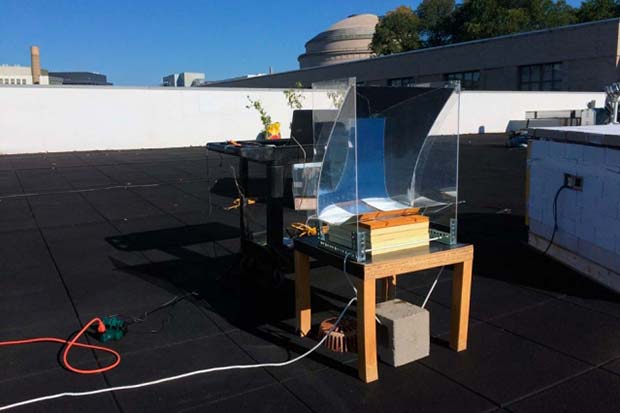The world of technology often leaves us with revolutionary changes in the way that we live. One such change has been our ability to use the power of the sun to our own ends. That power, though, might just be about to become stronger than ever: MIT Engineers have now built a new device which can soak up enough heat from the soil to boil water. Indeed, it can even produce heated steam with a heat in excess of 100-degrees Celsius. This comes without the need for any expensive to use or work with equipment, making it a revolutionary step forward in many ways.

Indeed, on a nice and sunny day, the equipment could produce enough steam to sterilize medical equipment safely, as well as use the equipment in cooking and in cleaning. The steam may also be used for heating in industrial purposes, and could even be used for desalinating drinking water. As we can see, there are many positive uses to have a low-cost tool for this process.
This new device hangs over water, instead of floating within it over fears of long-term contamination over time. No thicker than an average tablet, this little tool will then absorb the heat of the sun and then emit the heat to the water down below. At a point of 100C, this releases the steam into the device, where it is then funneled and pumped out of a filtered tube.
Speaking about the system was Thomas Cooper, the assistant professor of mechanical engineer at York University, who has led his work as a postdoc at MIT. He said that: “It’s a completely passive system — you just leave it outside to absorb sunlight,
“You could scale this up to something that could be used in remote climates to generate enough drinking water for a family, or sterilize equipment for one operating room.”
A transformative system
This new solar system has been developed over time, and was also overseen by the likes of Gang Chen, the Carl Richard Soderborg Professor of Power Engineering, MIT. They demonstrated a graphite-covered foam device that floated within the water in 2014. However, concerns over contamination meant that there was hesitation to continue with it is use. By getting around the main issue of contamination unlike any other device before it, this definitely opens some very interesting doors for technology.
By using a device that absorbs the short wavelength solar energy and heats up the device, the heat then is radiated out using long wavelength infrared radiation into the water. This is absorbed in by the water, then. The top layer then uses a small metal ceramic composite device that operates as the solar absorption device.
They sandwich a layer of the carbon foam that was used in the previous device, and a small tube at the end, allowing for the foam to exit. As time goes on, this could be used for so many purposes, and shows how we can create highly efficient and safe to use steam without expensive or potentially contaminated contact arrangements.